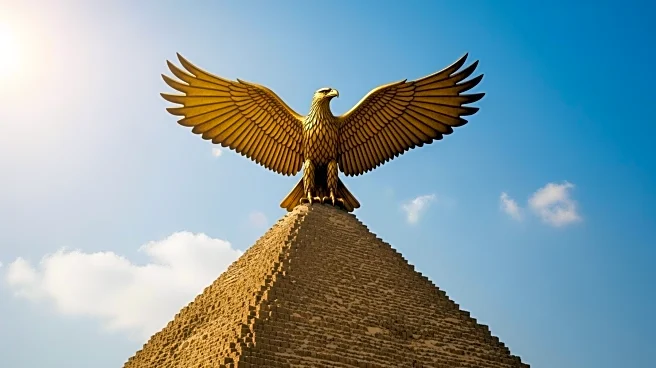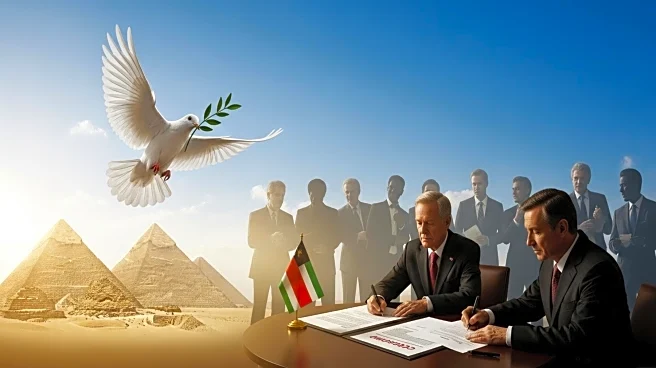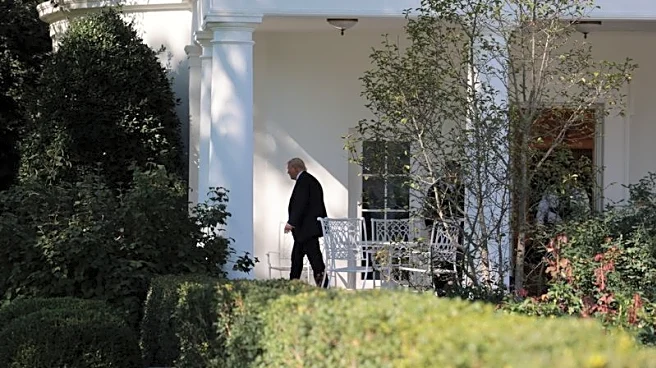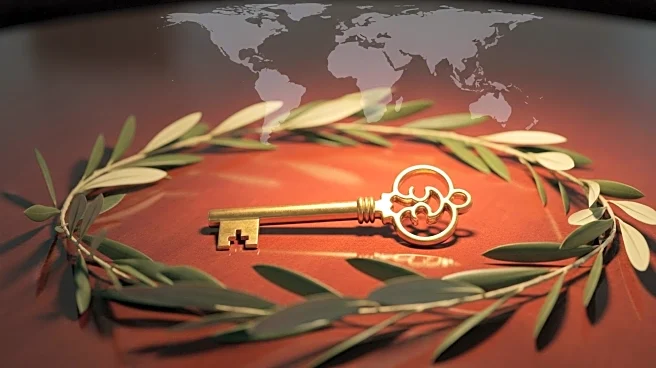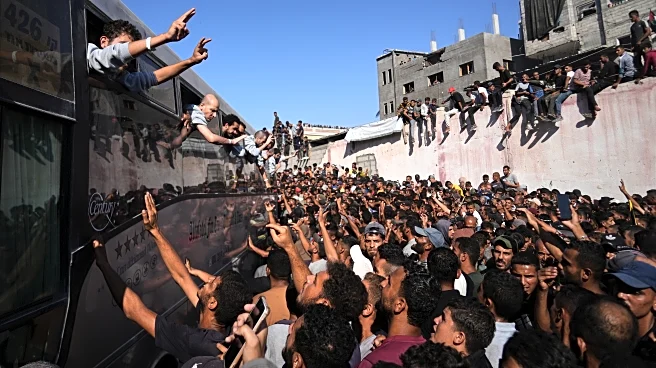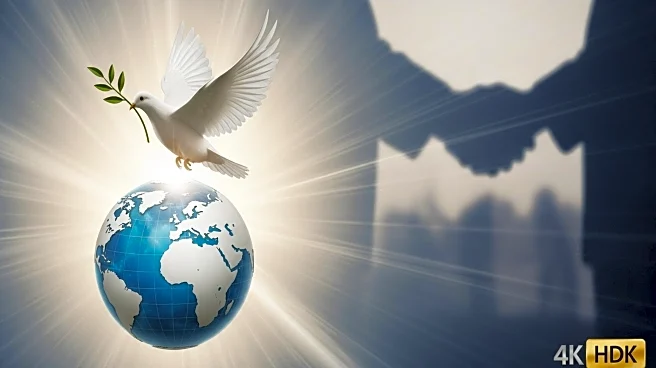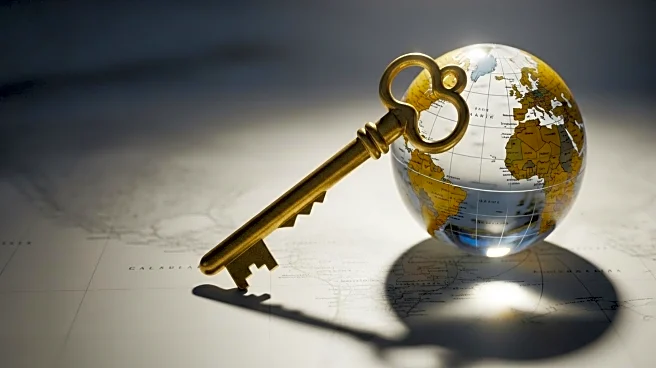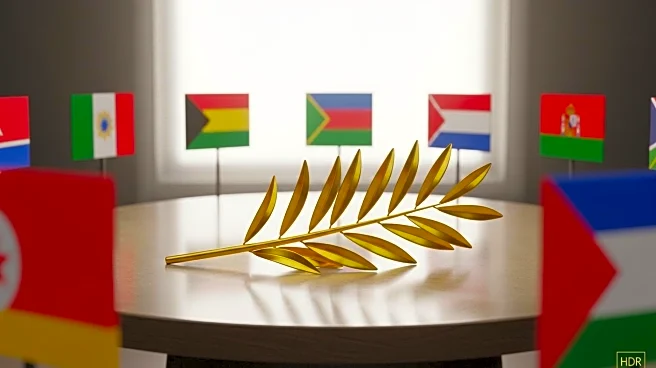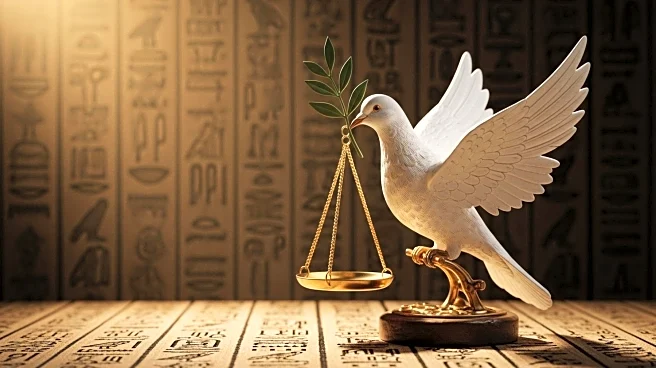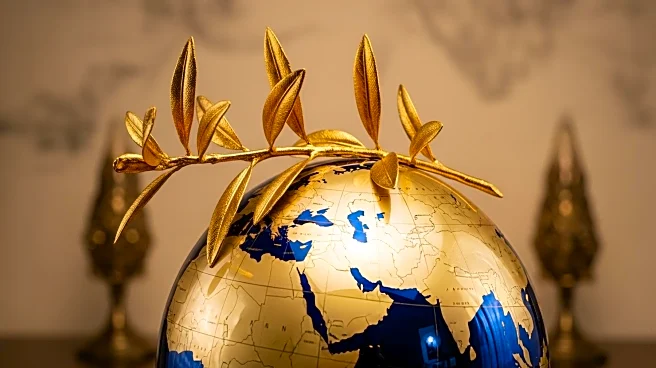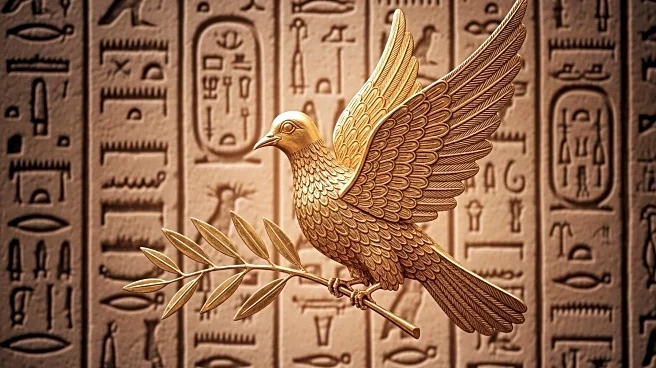What's Happening?
President Donald Trump joined over 20 world leaders in Sharm El-Sheikh, Egypt, for the signing of a ceasefire agreement between Israel and Hamas. The agreement marks the first phase of a peace plan aimed at ending the Gaza conflict. Notably absent from the ceremony were representatives from Hamas and Israel, with Israeli Prime Minister Benjamin Netanyahu citing a Jewish holiday for his absence. The memorandum, dubbed 'The Trump Declaration for Enduring Peace and Prosperity,' outlines commitments to uphold peace and resolve future disputes through diplomatic means. The agreement is largely symbolic, with Trump expressing confidence in its durability.
Why It's Important?
The signing of the ceasefire agreement is a significant step towards ending the prolonged conflict in Gaza, with potential implications for regional stability and international relations. The involvement of President Trump and other world leaders underscores the global interest in resolving the conflict. The agreement aims to protect human rights and ensure security for both Palestinians and Israelis, which could lead to economic and social improvements in the region. However, the absence of key stakeholders like Hamas and Israel raises questions about the agreement's effectiveness and the challenges ahead in achieving lasting peace.
What's Next?
The next phase of the peace plan involves rebuilding efforts in Gaza, which President Trump described as potentially easier than the initial negotiations. Trump also hinted at future diplomatic engagements with Iran, suggesting a willingness to lift sanctions if Iran cooperates. The success of the ceasefire agreement will depend on continued diplomatic efforts and the cooperation of all parties involved. The international community will be closely monitoring the situation to ensure compliance and support reconstruction efforts.
